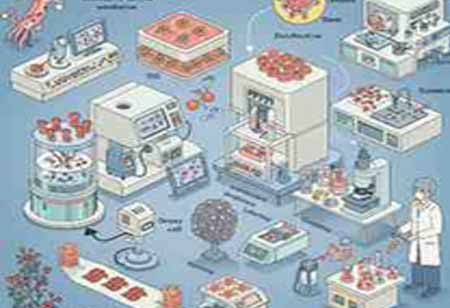Major Trends in Regenerative Medicine: A Comprehensive Overview
Personalized medicine, the application of 3D bioprinting, and the establishment of regulatory frameworks represent significant trends in regenerative medicine.

By
Medical Care Review | Friday, April 18, 2025
Stay on top of your health and well-being with exclusive feature stories on the top medical clinics and treatment centers, expert insights and the latest news delivered straight to your inbox. Subscribe today.
Fremont, CA: Radical technological advancements have quickened the speed of medical innovation. Regenerative medicine represents a groundbreaking technology that can transform the landscape of healthcare. Regenerative medicine, as suggested by its name, aims to develop methods and techniques for the regrowth, regeneration, or repair of cells, tissues, or organs that are diseased or damaged. It comprises reprogramming human or animal cells to perform their original activities. Gene therapy and cell therapy, including stem cell therapy, tissue engineering, and artificial organ creation, are some of the most important regenerative medicine approaches.
Regenerative medicine and therapies are currently being evaluated for various conditions, including cancer, neurological disorders, cardiovascular diseases, inflammatory and immune-related issues, and endocrine, genetic, metabolic, musculoskeletal, and ophthalmological ailments. There is significant potential for regenerative medicine. The discipline has now acquired popularity, with a few cell and gene therapy treatments getting FDA approval in recent years and other regenerative medicines being tested in preclinical and clinical trials.
Key Trends in Regenerative Medicine:
Gene therapy is gaining recognition, and some major pharmaceutical companies have acquired regulatory approval to launch their treatments. These therapies are typically quite expensive; however, the high cost is justified by the lifetime of treatment expenses.
Personalized medicine is also gaining popularity, with treatments tailored to individuals' genetic profiles for better outcomes. The use of 3D bioprinting also transforms organ and tissue production. Furthermore, regulatory frameworks are improving to facilitate speedier approvals and greater acceptance. These advancements make regenerative medicine more accessible and effective, bringing hope to previously incurable illnesses and improving overall patient care.
Top Challenges in Regenerative Medicine:
Some significant challenges must be addressed before this component may move further. The key challenge is tight control over stem cells produced or separated from adult tissue to ensure their safety after transplantation. This can be accomplished by constructing microenvironments that contain certain cues and are modeled after distinct stem cell habitats. Moreover, technology is required to develop large, engineered replacement tissues that enable entire vascularized grafts to be anastomosed with host vessels during transplantation, hence improving graft life. Finally, using studies to better understand the immune system, therapies can establish a pro-regeneration environment within the patient, which may improve the outcomes of regenerative medicine.







